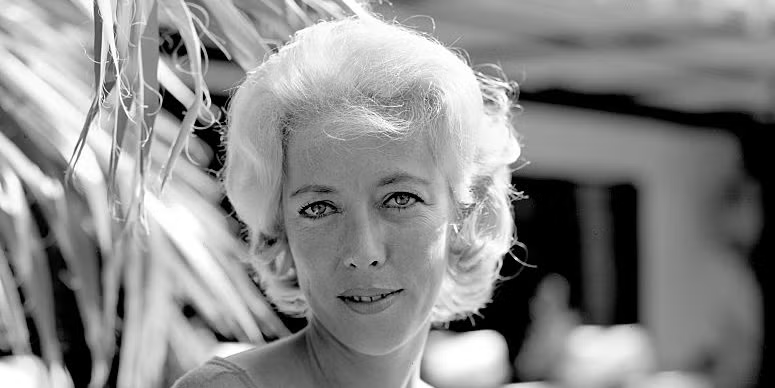
Table of Contents
Who Is Margaret Keane?
Margaret Keane was an American artist best known for her distinctive paintings featuring figures with large, expressive eyes. Her works became a cultural phenomenon in the 1950s and 1960s. However, behind her success was a troubling story of deceit and abuse. Keane’s husband, Walter Keane, initially claimed credit for her artwork, and his manipulation extended to their personal life, where he became increasingly abusive. In 1970, Margaret courageously revealed herself as the true creator of the “Keane” paintings, which led to a highly publicized legal battle. She ultimately won a defamation lawsuit against her ex-husband. Her compelling life story was depicted in the 2014 film Big Eyes, with actress Amy Adams portraying Margaret Keane.
Early Life
Margaret Keane was born Peggy Doris Hawkins in Nashville, Tennessee, on September 15, 1927, with some sources listing her full maiden name as Margaret Doris Hawkins. She demonstrated a passion for art at an early age, developing a unique style characterized by her creation of characters with large, captivating eyes. Keane pursued formal art education in both Tennessee and New York before marrying Frank Ulbrich, with whom she had a daughter, Jane.
Meeting Walter Keane
By the mid-1950s, Margaret had divorced Ulbrich and moved to San Francisco. It was there that she met Walter Keane, a Nebraska-born man who had studied art in Paris but was primarily working in real estate. Despite his background in art, Walter’s career was not flourishing, and he presented himself as an artist. The two were married in Honolulu in 1955. Margaret played an instrumental role in helping Walter transition from real estate to the art world. She supported him as he began selling her paintings at The Hungry i, a popular beatnik club in San Francisco. However, unbeknownst to Margaret, Walter was claiming the works as his own, signing them with the name “Keane” and presenting them to the public as his creations.
An Abusive Marriage
Margaret’s realization that her husband, Walter, was taking credit for her artwork came unexpectedly one evening at a club, where she watched him selling her paintings while falsely claiming to be the artist. Despite her shock, Walter convinced Margaret to support the ruse, even attempting to replicate her distinctive painting style. However, his inability to successfully emulate her technique would ultimately backfire.
Walter, though deceitful, was a skilled salesman. By the 1960s, Margaret’s artwork had become a dominant force in the art market, earning millions. The figures, particularly the children with their oversized eyes, became iconic and were widely recognized as “Keane Eyes” or “Big-Eyed Waifs.” These mass-produced images were beloved by the public but dismissed by art critics.
While her paintings flourished in popularity, Margaret’s personal life was marked by increasing misery. Walter, a heavy drinker, womanizer, and emotionally abusive husband, kept her isolated in a studio, forcing her to work without respite. His emotional and physical abuse escalated, culminating in threats to both her and their daughter Jane’s lives. It was at this breaking point that Margaret found the strength to leave him in 1965, taking Jane with her. She divorced Walter and later remarried, moving to Hawaii and converting to Jehovah’s Witnesses.
Exposing the Lie
Margaret’s story came to light in a 1970 radio interview, where she publicly revealed that she was the true artist behind the famous Keane paintings. In the mid-1980s, when Walter claimed that Margaret was lying in a USA Today article, she filed a defamation lawsuit. During the 1986 trial, Margaret was asked to quickly produce one of her signature figures. Walter, representing himself in court, refused to draw, citing a shoulder injury. In contrast, Margaret completed the drawing in front of the jury. As a result, she was awarded $4 million in damages, though she would never receive the money, as Walter had already squandered the fortune they had amassed from her art.
Big Eyes and Later Life
Margaret’s life and artistic journey were brought to the screen in Tim Burton’s 2014 film Big Eyes, where Christoph Waltz portrayed Walter and Amy Adams, who won a Golden Globe for her performance, played Margaret. The film’s production team reproduced nearly 200 of Margaret’s original works, and Adams met with Margaret to understand her personality and artistic process. The release of Big Eyes sparked renewed interest in Margaret’s paintings, and her work was showcased at the Keane Eyes Gallery in San Francisco.
Margaret Keane passed away on June 26, 2022, from heart failure, leaving behind a legacy that continues to captivate and inspire.
